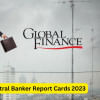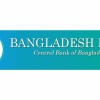Homework for monetary policy
The latest monetary policy, which the central bank governor had announced recently, has passed through the market with a fair amount of approval, but some economists found it 'self-contradictory.' The repo rate, which we call the policy rate, has been lowered to 50 basis points to reach 6.75 percent from 7.25 percent. Staying 200 basis points below the repo rate, the reverse repo rate has been pushed to slide to 4.75 percent from 5.25 percent.
In the backdrop of a historically low interest rate regime, the market did not hesitate to welcome this move by Bangladesh Bank – a rate cut that took place after three years. However, fixing private credit growth at 14.8 percent for the rest of the FY2016 seemed inadequate to some economists, as they find this aspect of the monetary policy to be restrictive, cautious and slightly contractionary. It won't be unusual to find a sense of self-contradiction in the current monetary policy if this stance on private credit growth swims against the indicatively expansionary stance on the policy rate cut.
These comments on private credit growth, nevertheless, should be taken with a grain of salt. The monetary policy of July 2015 targeted 15 percent growth for the entire FY2016. A half yearly revision in December 2015 found the real growth rate in that sector to be 13.8 percent. As a result, setting the target to 14.8 percent for the rest of the year appears pragmatic and encouraging for the private sector that occupies 35 to 40 percent of our GDP. The realised figure of December 2015, rather than the targeted figure of July 2015, should be the appropriate example to judge the targeted figure for June 2016.
The alleged 'self-contradiction' gets sufficient clarification, if private credit is viewed from that angle. Of course, there is room for arguing that private credit growth should have been nudged up in the target to reach 15 percent or above. And the space remains open, as the governor assures of interim adjustments should private credit signal any excess appetite.
The question still remains as to why the central bank did not make this adjustment in the first place while designing monetary policy. Would that not seem more encouraging for the market and the private sector? There are three responses to this question: the fear of self-defeat, credit dispersion and quality, and finally, the possibility of overheating the economy.
The first point asserts that high credit growth will eventually mar the real intention. If the central bank assigns higher private credit growth, growth in money supply must go up, stoking the possibility of inflation, especially in the non-food sector. This kind of inflation will erode real consumption, throwing cold water on private investments in the subsequent periods. So, the ultimate objective of promoting private credit will be crushed by this self-created monster.
Are there scopes for internal adjustments in the components of money supply? Very little. Net Foreign Assets (NFAs) and Net Domestic Assets (NDAs) are the two major components of money supply. Since NFAs are by and large externally determined, any move to target higher private credit growth through NDAs will directly hit money supply, fuelling inflation in the end. Hence, central banks often find their hands tied and they have a narrow driveway to manoeuvre.
The second point for remaining moderate on private credit growth is better credit dispersion and improved credit quality in recent years. Not escaping our eyes is the growing financial inclusion that distributed credit all around, particularly to empower the poor and women. This focused approach to loan disbursement has sharpened what economist Keynes termed marginal efficiency of capital. If 6.5 percent output growth, which is more than 20 percent private credit growth delivered three years ago, can now be achieved through 13 percent credit growth, does it not prove improved credit quality through better social inclusion?
Credit concentration in the hands of the few super-rich has been put on a downward spiral by recent banking practices, releasing more funds for micro, small and medium enterprises that now eclipses almost one-third of the total outstanding loans. The central bank draws enough oxygen from the recent development in loan disbursement. Accordingly, the regulator strongly believes that even a 14.8 percent private credit growth would be good to register a 7 percent output growth if both fair dispersion and credit quality can be guaranteed. The recent slimming of the gap between loan disbursement and recovery in micro, small and medium enterprises lends credence to credit quality and a buoyant investment climate.
The third point in order to remain slightly moderate on private credit growth is the possibility of overheating the economy. Being in the driver's seat, the central bank does not want to risk the lives of its passengers by over speeding the bus. Excessive credit growth may siphon off funds to fuel illicit money transfer or to embolden the stock market with bubbles that are doomed to bust soon. If a credit bulge pumps up production beyond its potential, a demand hype will aggravate non-food, non-fuel core inflation, which shows no sign of abating in recent months.
The fear of demand-pull inflation, pertinent to the Phillips curve, always makes the central bank behave like a judicious 'dad' with his demanding 'wife' in a family of ten children. The longest-serving US Fed Chair William Martin defined the central bank's job as "to take away the punchbowl when the party gets going." The current monetary policy had gone through this homework, before being announced by the governor.
The writer is chief economist of Bangladesh Bank.

 For all latest news, follow The Daily Star's Google News channel.
For all latest news, follow The Daily Star's Google News channel. 








Comments